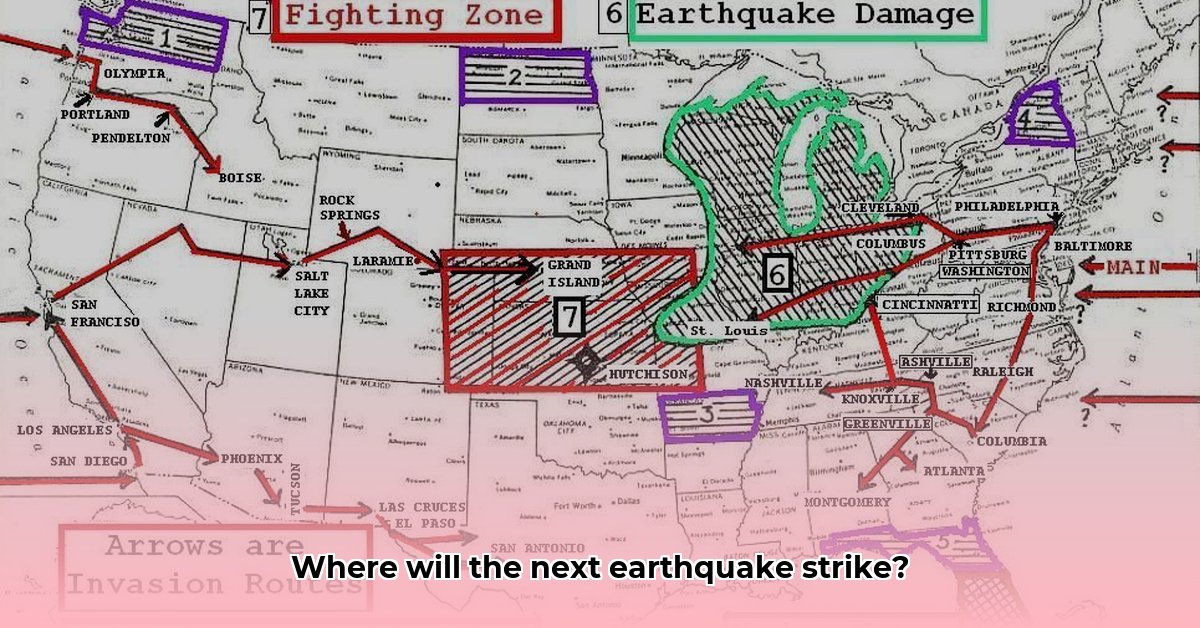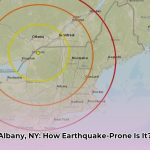Understanding the potential for earthquakes in your area is crucial for preparedness. This guide utilizes the USGS Interactive Fault Map to help you explore earthquake hazards, understand fault lines, and take practical steps to protect yourself and your community.
Exploring Earthquake Hazards
Deep beneath the surface, the Earth’s crust is fractured by a network of faults. These fractures are the primary source of earthquakes. The USGS Interactive Fault Map provides a detailed visualization of these faults, offering insights into potential earthquake activity across the United States. This map, constantly updated with the latest data, reveals intricate details, from minor local fractures to major fault systems like the San Andreas. It also connects users to the Quaternary Fault and Fold Database, a comprehensive resource for geological information.
Navigating the USGS Interactive Fault Map
This interactive map provides a user-friendly way to explore fault lines and understand potential earthquake risks.
1. Accessing the Map: Search online for “USGS Fault Map” or visit the USGS Earthquake Hazards Program website. (https://www.usgs.gov/programs/earthquake-hazards/hazards)
2. Exploring the Interface: Familiarize yourself with the map controls. You can zoom, pan, and potentially change the base map layer (e.g., satellite or street view).
3. Locating Your Area: Use the search bar or zoom and pan functions to focus on your specific address or region.
4. Identifying Faults: Look for lines on the map, representing faults. Different colors and styles likely indicate the activity level or type of fault.
5. Investigating a Fault: Click on a fault line (if interactive clicking is enabled) to reveal details like its name, type of movement, and potentially its earthquake history.
Decoding the Map: Fault Types and Terminology
Understanding the types of faults and key earthquake terminology is essential for interpreting the map’s data.
Types of Faults:
- Strike-Slip Faults: Horizontal movement, where two blocks of earth slide past each other. Example: San Andreas Fault. These faults can generate very large earthquakes.
- Normal Faults: Vertical movement, where one block slides down relative to the other. Example: Basin and Range Province faults. These generally produce smaller earthquakes than strike-slip faults.
- Reverse (Thrust) Faults: Vertical movement, where one block pushes up and over the other, often contributing to mountain formation. Example: Himalayas. These faults can cause some of the largest earthquakes.
Key Terms:
- Magnitude: Measures the energy released by an earthquake, often using the Richter scale.
- Epicenter: The point on the Earth’s surface directly above the earthquake’s origin (hypocenter).
- Hypocenter (Focus): The point underground where the earthquake originates within the earth.
Earthquake Preparedness: From Information to Action
The USGS Fault Map empowers you to take proactive steps for earthquake preparedness.
Assessing Your Risk:
Use the map to determine your proximity to active faults and understand your potential risk.
Informing Decisions:
Factor this information into decisions about building codes, land use planning, and home purchases.
Developing a Plan:
Create a personalized earthquake preparedness plan, including:
- Securing Your Space: Anchor heavy objects to walls, check gas and water lines for flexibility.
- Emergency Kit: Stock essentials like water, non-perishable food, first-aid supplies, a flashlight.
- Communication Plan: Establish a designated meeting place and communication strategy with family.
- “Drop, Cover, and Hold On”: Practice this essential safety drill regularly.
Understanding Earthquake Likelihood
National Seismic Hazard Maps (NSHMs):
These maps, available on the USGS Earthquake Hazards Program website, show the probability of experiencing different levels of ground shaking over a specific timeframe. They provide a valuable tool for assessing regional earthquake risks.
Unified Hazard Tool:
The USGS Unified Hazard Tool combines data on various natural hazards, including earthquakes, floods, landslides, and wildfires, providing a comprehensive risk assessment for your area.
Earthquake Scenario Maps:
These maps model the potential impact of hypothetical earthquakes, illustrating ground shaking, potential damage, and other crucial information. They are valuable resources for city planning and emergency response.
Staying Informed
Latest Earthquakes Map:
The USGS real-time earthquake map tracks current seismic activity worldwide, providing a dynamic view of our planet’s constant movement.
FEMA Resources:
The Federal Emergency Management Agency (FEMA) offers numerous resources on earthquake preparedness, from creating emergency kits to making your home safer.
The Evolving Science of Earthquakes
Geological research is constantly evolving. While the USGS Fault Map reflects our current understanding, ongoing studies continually refine our knowledge of earthquakes and fault lines. Ongoing research explores various aspects, including the influence of rock type on fault behavior and the intricate processes of stress accumulation and earthquake triggers. Some experts believe that future research might unlock more accurate earthquake prediction capabilities. Stay updated on the latest research and findings to ensure your preparedness strategies remain current.
By actively using the USGS Interactive Fault Map and other resources, you can gain a deeper understanding of earthquake hazards and take proactive measures to protect yourself and your community. While we cannot control Earth’s powerful forces, knowledge and preparedness are our best defenses.
- Water Mill Electricity Generator Provides Free Home Power - December 16, 2025
- Water Wheel Electric Generator Provides Free Home Electricity - December 15, 2025
- Choosing the Right Portable Hydro Turbine for Your Needs - December 14, 2025
















